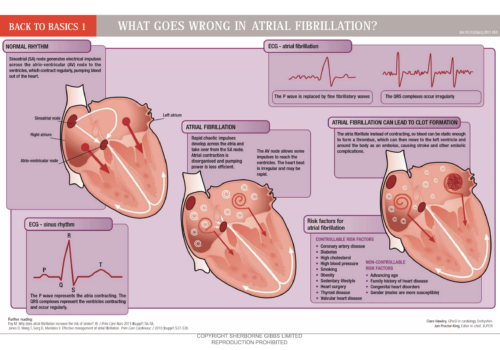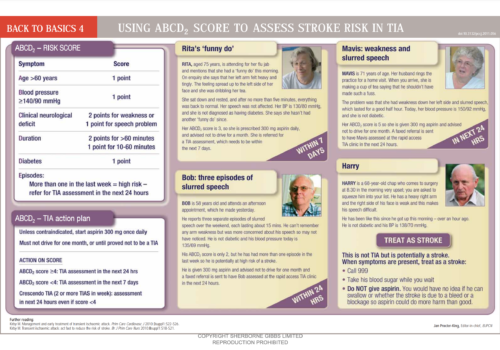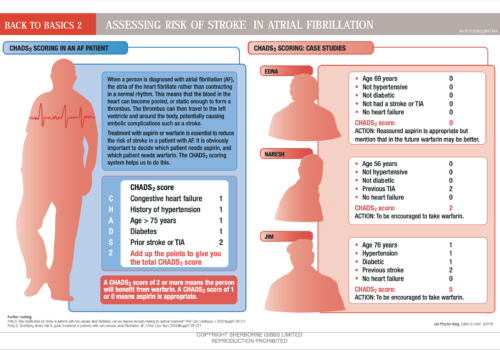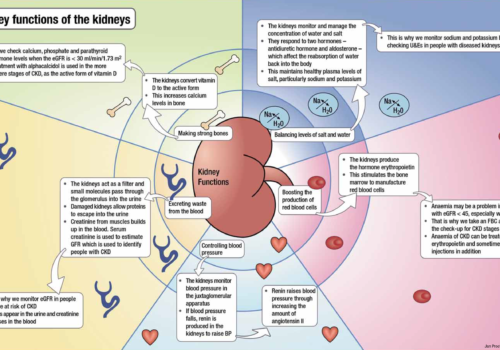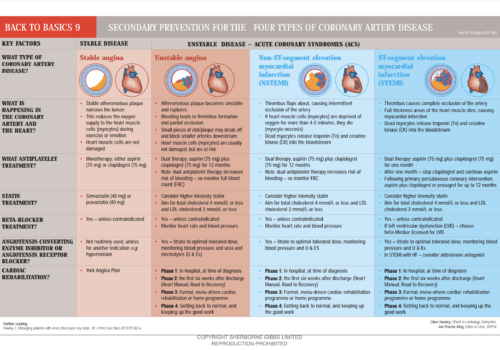
Back to Basics: Secondary prevention for the four types of coronary artery disease
Back to Basics: What goes wrong in atrial fibrillation (updated September 2011)
Back to Basics: Using ABCD2 score to assess stroke risk in TIA
Back to Basics: Assessing risk of stroke in atrial fibrillation
Proteinuria: should it replace cholesterol as a marker for people at high risk of CVD?
We have all seen paintings of early physicians looking at flasks of urine to give an indication of a person’s health. And most of us can remember days of rows of urine pots lined up to test for new patients in primary care and in hospital outpatient clinics. We may assume that those days have gone in the era of blood testing and CT scans. So why are we suggesting that urine testing has a central role in finding patients with previously undiagnosed cardiovascular disease?
A primary care guide to chronic kidney disease
Chronic kidney disease (CKD) has shot up the primary care agenda over the last few years, and is now well recognised as an independent risk factor for cardiovascular disease (CVD). At the same time, CVD is a risk factor for progression of CKD. The close links between CKD and CVD mean we have to get […]
Towards the rational prescribing of oral contraceptives
This supplement is supported by Consilient Health Ltd on behalf of whom this Expert Working Group was convened and funded. Consilient Health Ltd also provided a framework for the discussion.
Effective prescribing of the contraceptive implant
This supplement was developed in conjunction with and its production paid for by Merck Sharp & Dohme Limited.
Editorial
The Department of Health certainly gave us all something to think about over the Christmas break and well into the New Year. In the middle of last December, Secretary of State Andrew Lansley confirmed that the Coalition Government is pressing ahead with its radical structural changes to the NHS in England.1 This was despite concerns by professional and patient organisations, and indeed the House of Commons Select Committee,2 about the feasibility of introducing major reforms when the NHS is under increasing financial pressures.
Helping women with recurrent vulvovaginal candidiasis
Vulvovaginal candidiasis, or thrush, is very common, affecting 50-75% of women during their lifetimes. About half of women who experience an episode will suffer a further attack and 5% will develop recurrent disease. Recurrent episodes are associated with depression and loss of libido, but a combination of lifestyle advice and antifungal treatment should control symptoms for most women.
Ovarian cancer: a diagnostic nightmare
Think of a disease in which diagnostic delay may kill the patient, yet early diagnosis is extremely difficult. Add that the disease is quite rare, and symptoms mimic much more common benign conditions. If that is not tough enough, screening has not (yet) been shown to be helpful, and the primary diagnostic test is quite specialised. Does this add up to a problem? Of course it does, and the diagnostic nightmare is ovarian cancer.

